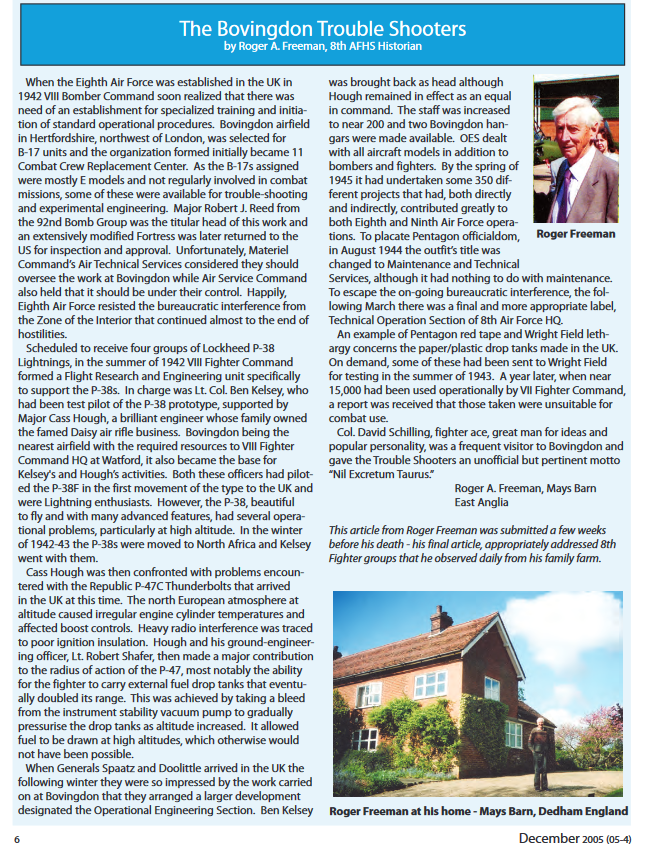 Extracted from 8th Air Force News 2005 with thanks.
Extracted from 8th Air Force News 2005 with thanks.
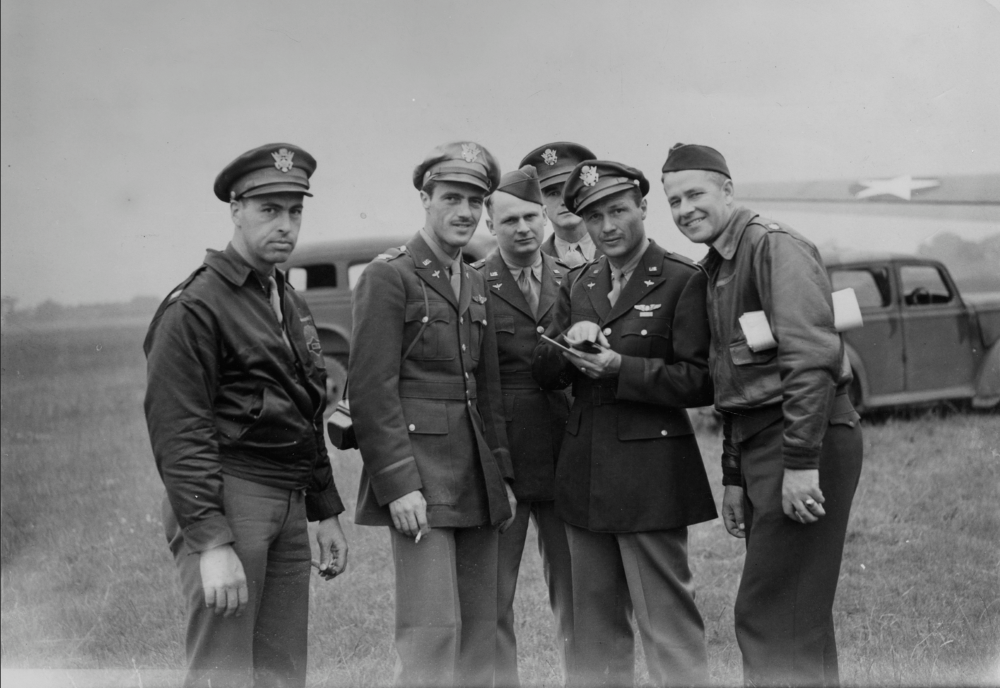 Col Kelsey (left) Major Hough (2nd Right) and other members of The First Fighter Group. June 1942. Probably at Goxhill, Lincs. Photo: Roger Freeman Collection American Air Museum in Britain.
Col Kelsey (left) Major Hough (2nd Right) and other members of The First Fighter Group. June 1942. Probably at Goxhill, Lincs. Photo: Roger Freeman Collection American Air Museum in Britain.
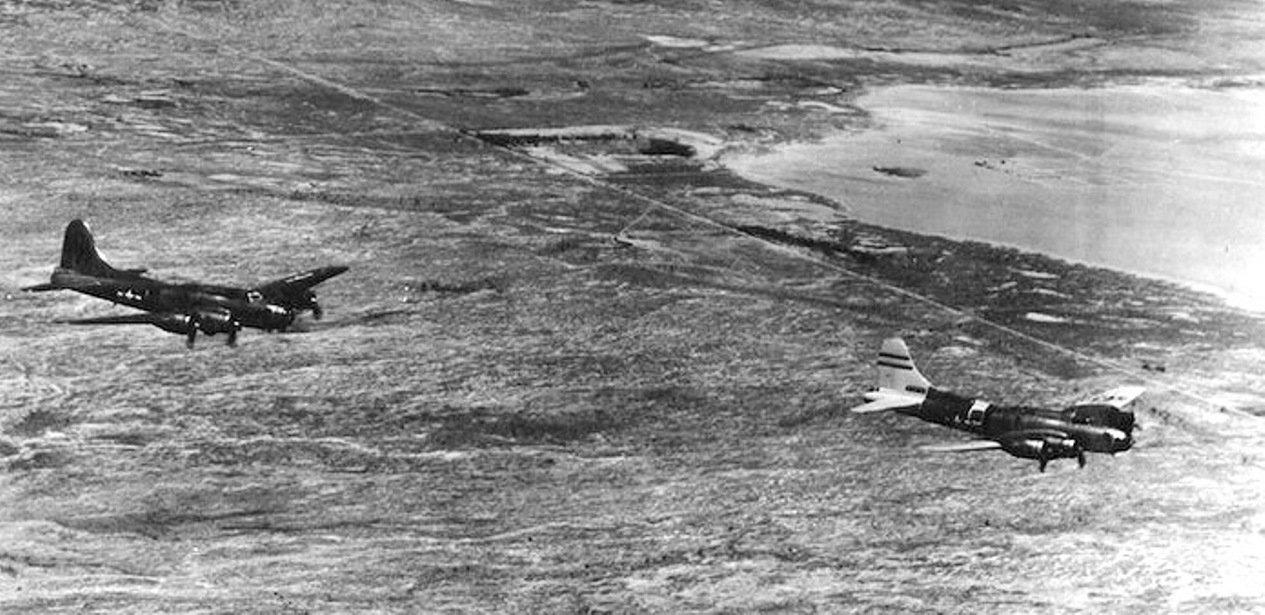 'Mother' and 'Baby' 1944. The 'Mother' would usually be at a much greater height than this. 'Mother' ships were sometimes at an altitude of 18,000 feet above the 'Baby' at the initial rendezvous point. Photo: American Air Museum in Britain.
'Mother' and 'Baby' 1944. The 'Mother' would usually be at a much greater height than this. 'Mother' ships were sometimes at an altitude of 18,000 feet above the 'Baby' at the initial rendezvous point. Photo: American Air Museum in Britain.
Little is mentioned about the part that Bovingdon's USAAF Operational Engineering Section played in the early days of the ill-fated 'Project Aphrodite' in which war- weary B17F/G aircraft were developed to be used as remote controlled Flying Bombs. For a general overview use this link:
https://theaviationgeekclub.com/proj...fes-v-1-sites/
The first flight trials took place at Bovingdon on the evening of 24th June 1944. Colonels Cass Hough and Al Key flew the B17 'Baby' while Major Henry J. Rand operated as the Controller in the B17 'Mother' ship. Cloud restricted 'Mother's' height from a planned 20,000 feet to 6,000 feet but the trials were considered a reasonable success. During June 1944 Ten aircraft were converted to 'Babies' at Burtonwood, Lancs and flown initially to Bovingdon. Intensive crew training at Bovingdon and Honington ? commenced in great secrecy probably towards the end of June 1944, with each volunteer requiring 25 hours flying time. The Project came under the control of the U.S. Third Air Division H.Q. at Elveden Hall, Suffolk. At this stage further aircraft were being converted at Honington Airfield, Suffolk where technical and operational support for the Project was then based. Volunteer crews included men drawn from the 388th BG (B17) Knettishall, Suffolk and the 458th BG (B24) Horsham st Faith, Norfolk. The latter were experienced in the use of Azon guided weapons and some of their B24s were used as 'Mother' ships. The U.S. Navy also participated as 'Project Anvil' using war- weary PB4Y-1 aircraft.
The first mission was planned to operate from RAF Woodbridge, Suffolk towards the end of the first week of July 1944 (I think the explosives were loaded there on July 7th). The Technical Support Section moved in from Honington en-masse. However lengthy delays, mainly weather related were encountered. It became clear that a very busy Emergency Landing Strip was not suitable for Bombers each loaded with 20,000lbs of high explosive, plus Escorts, sitting around waiting for the weather to improve. The Americans were not made to feel welcome at Woodbridge. One account has the ten drones parked up wing-tip to wing-tip in an isolated corner of the airfield together with the Project's tented encampment. There were complaints from the RAF about tarmac damage caused by the heavily loaded aircraft. To cap it all, much to the Americans' concern, a Luftwaffe Junkers 88G-1 nightfighter lost and low on fuel landed on the strip to be captured intact during the early hours of 13 July 1944.
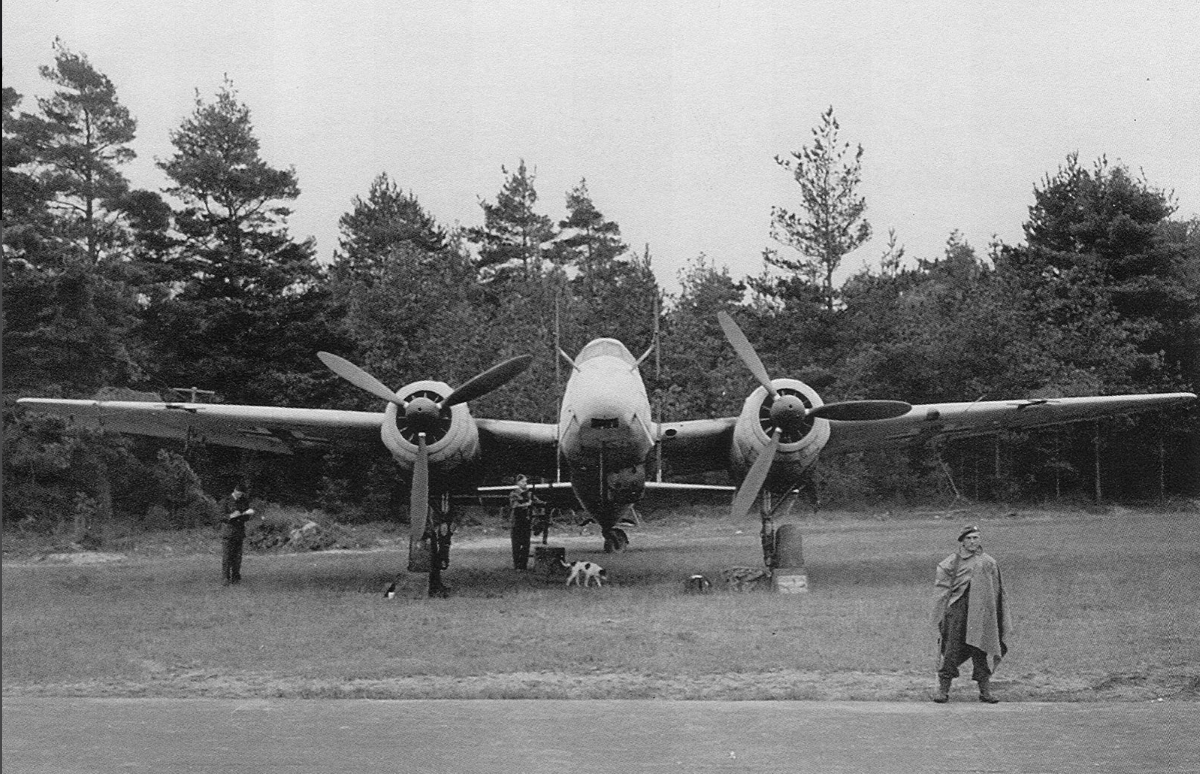
On or around 15 July 1944 the Mission was cancelled and the Project decamped from Woodbridge to their new base which had been known as RAF Winfarthing now renamed RAF Fersfield in Norfolk. Here they remained for the duration of the Project although a few of the last missions are thought to have been flown from the parent Airfield at Knettishall from where technical and operational support was supplied to Fersfield.
(Further Reading: 'Final Flights' by Ian McLachlan Published by PSL 1989. and 'Aphrodite Desperate Mission' by Jack Olson published by Putnam 1970.)
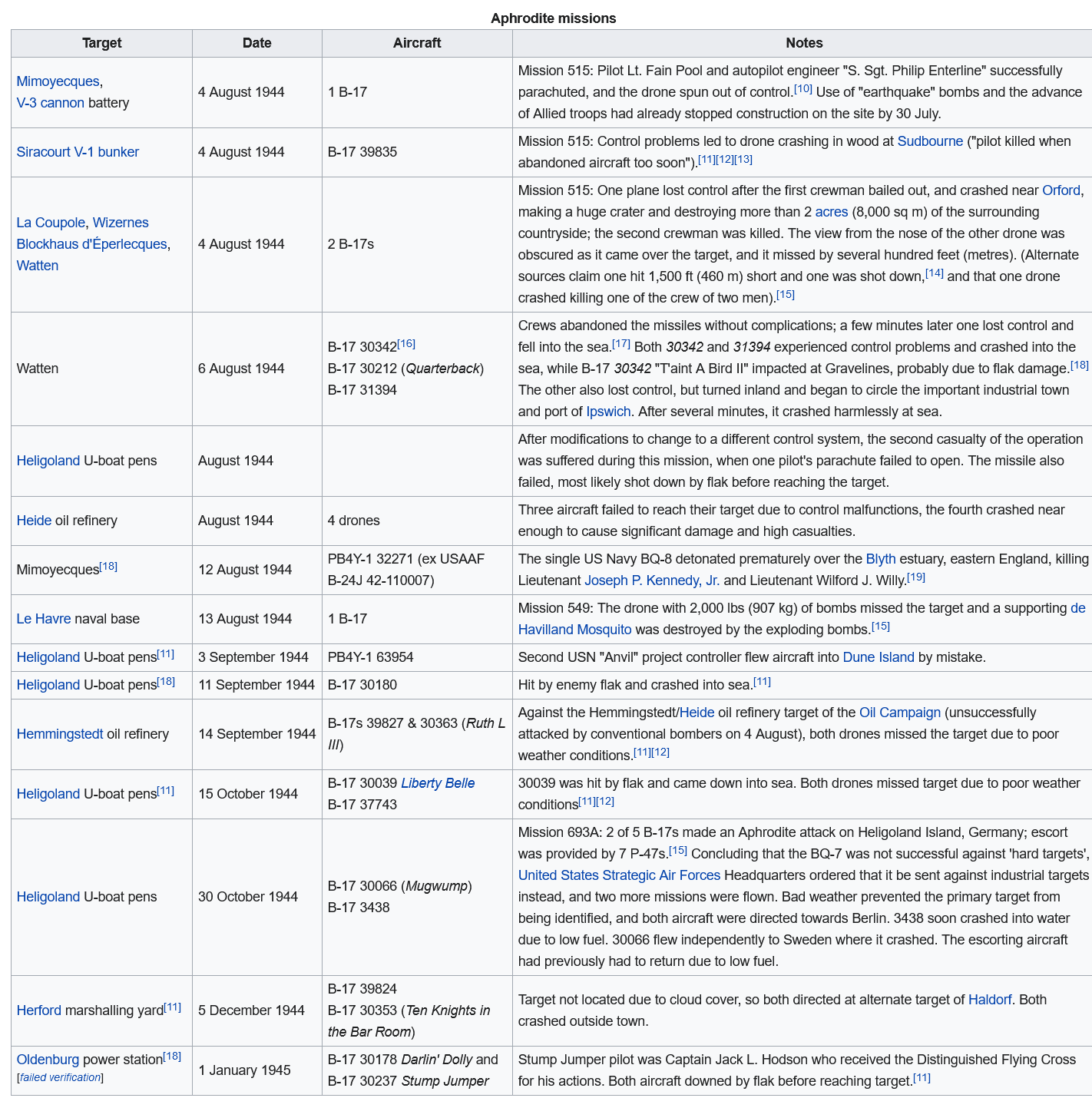
Source: Wikipedia N.B. The above is not wholly accurate. For instance on August 4th 1944: The Crash 'Near Orford' and the crash at Sudbourne are one and the same, the pilot being killed and the engineer surviving.
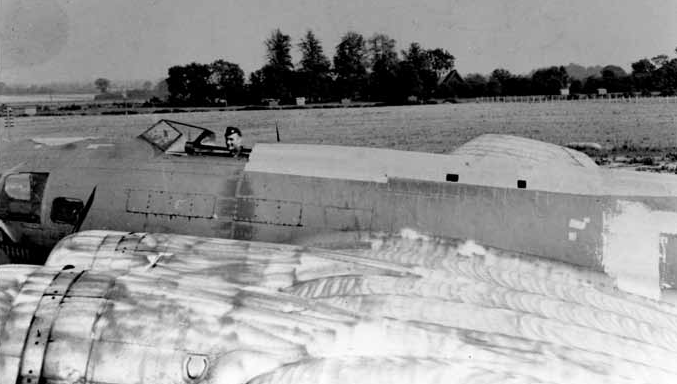
Lieut Colonel Roy Forrest, Commanding Officer USAAF Fersfield seated in Gremlin Gus 11.
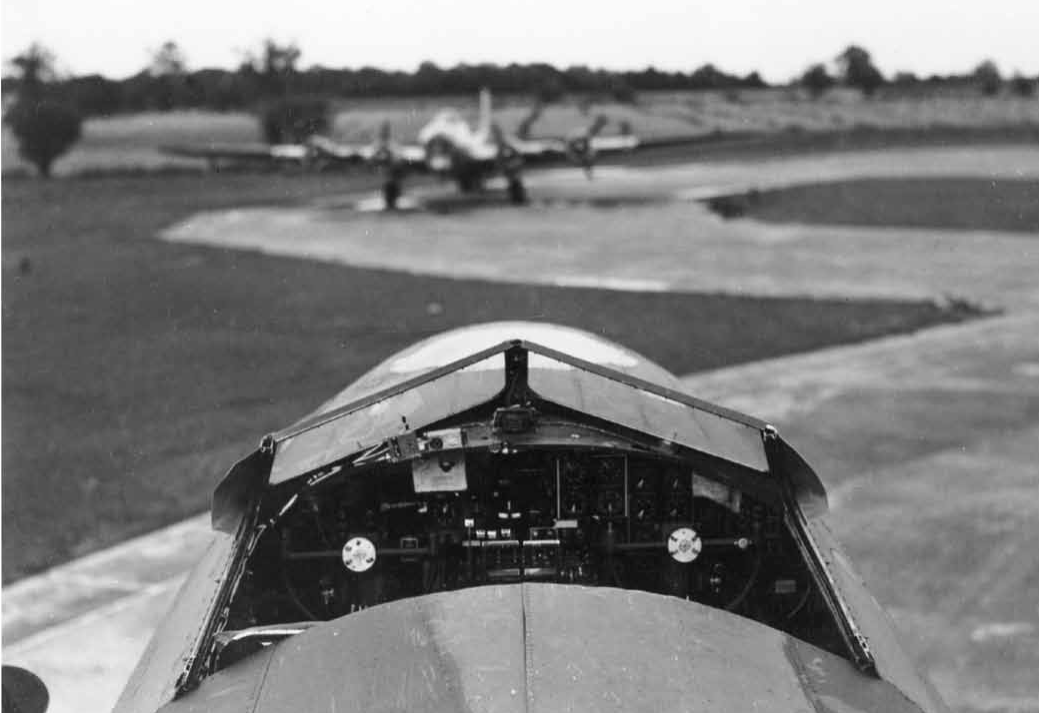

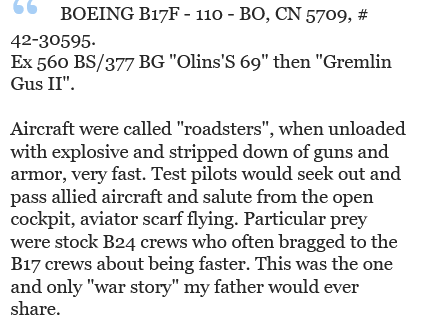
Ack: Flight Aware and Doug Hildreth.
The first image, which was probably taken at Fersfield , appears in the first edition of Roger Freeman's classic book 'The Mighty Eighth' (1970) and is there mis-identified. The B17 is 42-30595 Gremlin Gus 11 and as far as I know it was the only B17 so 'modified'. It was adapted to carry Hydrostatic Bombs the loading of which necessitated the removal of much of the top fuselage which was then replaced by a fairing on completion of loading. Unusually the cockpit was left exposed to the elements. It is said that the windshield came from a large motor car and that the B17 was nick-named 'The Roadster'. It was designed to sink the German Battleship 'Tirpitz', which the RAF finally managed to do on November 12th 1944. As can be seen in the last photograph this B17 was salvaged in 1946 and looks to possibly be back in the USA rather than in Britain.
A couple of interesting links:
https://www.forcedlandingcollection....0-mugwump.html
https://thefrontlines.com/story/WW2-project-aphrodite/
Captured Ju 88 Radar Nightfighter